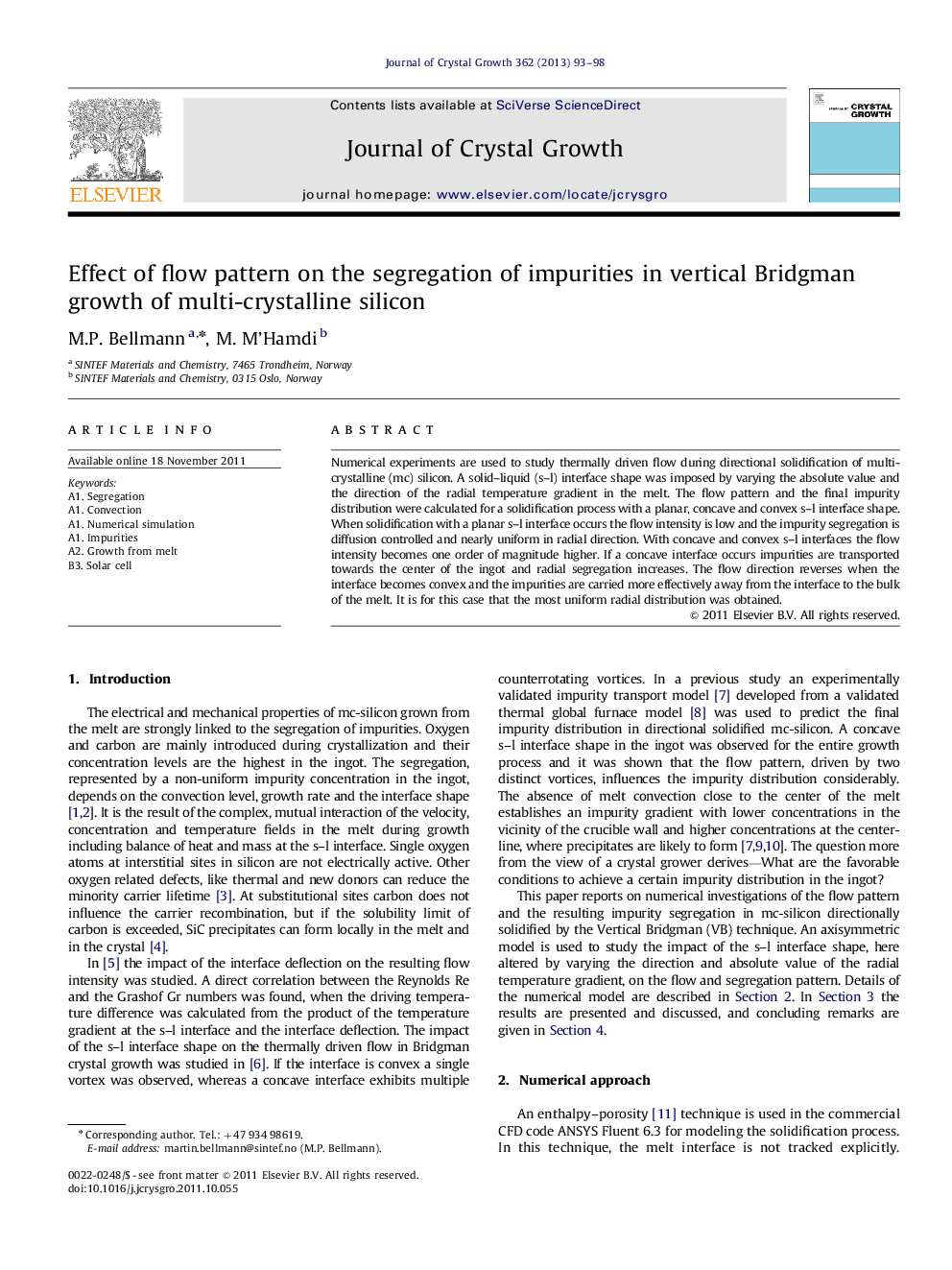| Article ID | Journal | Published Year | Pages | File Type |
|---|---|---|---|---|
| 1791285 | Journal of Crystal Growth | 2013 | 6 Pages |
Numerical experiments are used to study thermally driven flow during directional solidification of multi-crystalline (mc) silicon. A solid–liquid (s–l) interface shape was imposed by varying the absolute value and the direction of the radial temperature gradient in the melt. The flow pattern and the final impurity distribution were calculated for a solidification process with a planar, concave and convex s–l interface shape. When solidification with a planar s–l interface occurs the flow intensity is low and the impurity segregation is diffusion controlled and nearly uniform in radial direction. With concave and convex s–l interfaces the flow intensity becomes one order of magnitude higher. If a concave interface occurs impurities are transported towards the center of the ingot and radial segregation increases. The flow direction reverses when the interface becomes convex and the impurities are carried more effectively away from the interface to the bulk of the melt. It is for this case that the most uniform radial distribution was obtained.
► Fully transient simulation of solidification experiment with imposed solid–liquid interface shapes. ► Simulation of the final segregation pattern. ► Improved radial segregation for a convex solid–liquid interface shape.
